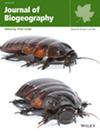The Northern Hemisphere harbours the greatest diversity of temperate plants on Earth, with East Asia having the highest species richness compared with North America and Europe. When and how this uneven diversification pattern emerged remains unclear. Here, we use a conifer genus that forms extensive forests in the Northern Hemisphere to explore a fundamental question in ecology and evolution: what processes underlie temperate biodiversity through time and space?
The Northern Hemisphere.
Abies.
To reconstruct a well-supported framework for estimating diversification rate, we performed phylogenetic analyses using concatenation and coalescent methods based on 58 fir taxa and 56 nuclear single-copy genes. Niche evolution was explored using species occurrence data and environmental factors based on the l1ou model. Multiple regression was carried out to identify correlations between species richness and environmental variables at global and regional scales, to evaluate factors of species diversity preference, and potentially to explain the evolutionary history of firs.
We identified East Asia as having the highest species diversity and speciation rate. Two clade-specific niche shifts corresponding with the distribution of firs were detected, one in the Himalaya-Hengduan Mountains (c. 12.2 Ma) and the other in the Mexican highlands (c. 14.3 Ma), but none in the Euro-Mediterranean region. Fir species richness increased with cool temperatures both globally and regionally. Seasonal precipitation showed significant positive correlation to species richness on a global scale and in North America and the Euro-Mediterranean region. Soil factors showed significant trends and moderate correlations with species richness in the Himalaya-Hengduan Mountains and Mexican highlands.
Our results indicate that modern firs prefer cool climates with seasonal rainfall. East Asian firs experienced niche shifts with the Himalayan orogeny in the Middle Miocene. Novel heterogeneous habitats due to changes in topography and the establishment of a monsoon climate, accompanied by niche shift, can account for the high speciation of firs in East Asia. A similar process is found in the Mexican highland firs. In contrast, cold–dry continental climate in North America since the late Paleogene and the lack of seasonal rainfall and relatively stable topography in the Euro-Mediterranean region are the main limiting factors for fir diversification. Our study rejects the ‘clade age’ hypothesis but supports the hypothesis that niche shift related to high diversification rate triggered by environmental heterogeneity underlies the uneven species diversity of the Northern Hemisphere.


